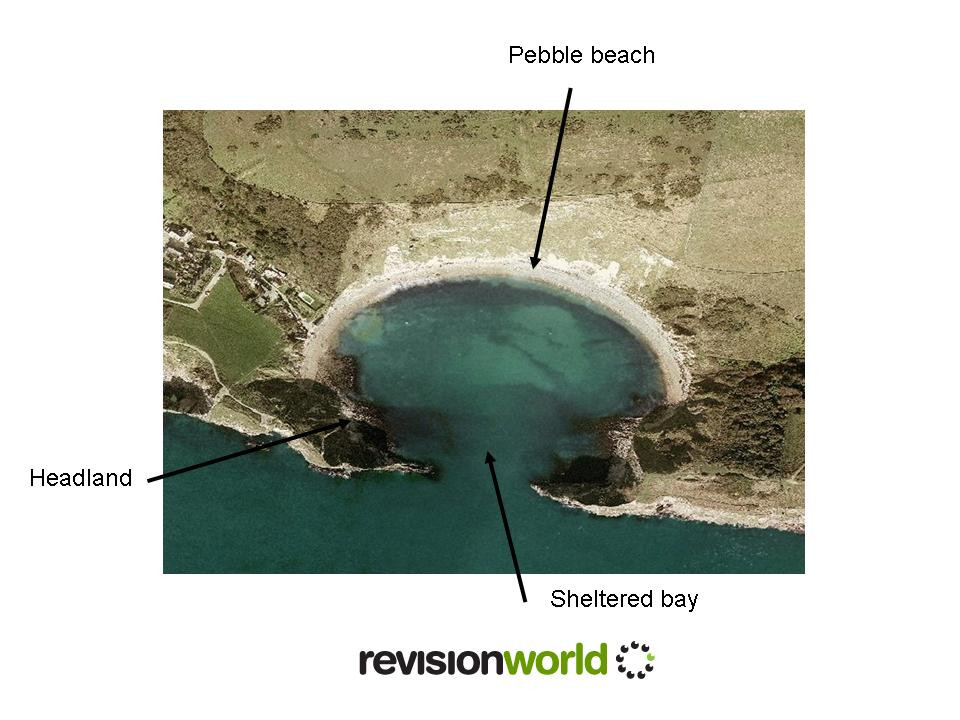This section covers
- Beaches
- Spits and Tombolos
Beaches
Beaches are the gently sloping areas of land between the high and low water marks. They ususally form in sheltered bays where two headlands can protect the area from erosion.
EXAMPLE: Lulworth Cove in Dorset

Beaches differ from place to place as result of the size of the fetch, human interference and material type. Beaches are formed by constructive waves.
The most common beach materials are sand, shingle and pebbles. Sandy beaches are usually gently sloping but coarser materials such as large shingle allow steeper gradients to develop. Some of the material may be thrown up into steep ridges (berms) by storm waves.
The materials from which a beach are formed are carried by longshore drift along the coast.
Spits
A spit is a long, narrow ridge of sand or shingle. One end of the spit is attached to the land and the other end extends out into the sea.
The process of longshore drift carries material along the beach. When the coastline changes direction or where there is a river estuary material is deposited longshore drift continues to move material in the same direction. In this way, a ridge of deposited material gradually builds up in the deeper water.
If the winds sometimes blow from a different direction, this can cause material to be moved in a different direction and the spit develops a ‘hooked’ or curved end. Behind the spit, in the calm water, mud is deposited and a salt marsh will develop. On the spit itself, sand can be piled up by the wind to form sand dunes.
An example of a spit in the UK is Spurn Point which can be found along the Yorkshire Coastline.
Case Study - Spurn Point Spit
- Spurn Head or Spurn Point as it is also known is a narrow sand spit on the tip of the coast of Yorkshire it reaches into the North Sea and forms the north bank of the mouth of the Humber estuary
- It is over 3 miles (5 km) long, and as little as 45 metres wide in places
- The southernmost tip is known as Spurn Head or Spurn Point Spurn Head, owned since 1960 by the Yorkshire Wildlife Trust It covers 113 hectares (1.13 km²) above high water
- It is a designated National Nature Reserve, Heritage Coast and is part of the Humber Flats, Marshes and Coast Special Protection Area
- It is home to many rare species such as Cliff Swallows and Brown Albatrosses
- It is made from sand and shingle that has been eroded from the Holderness Coastline and washed down by longshore drift
